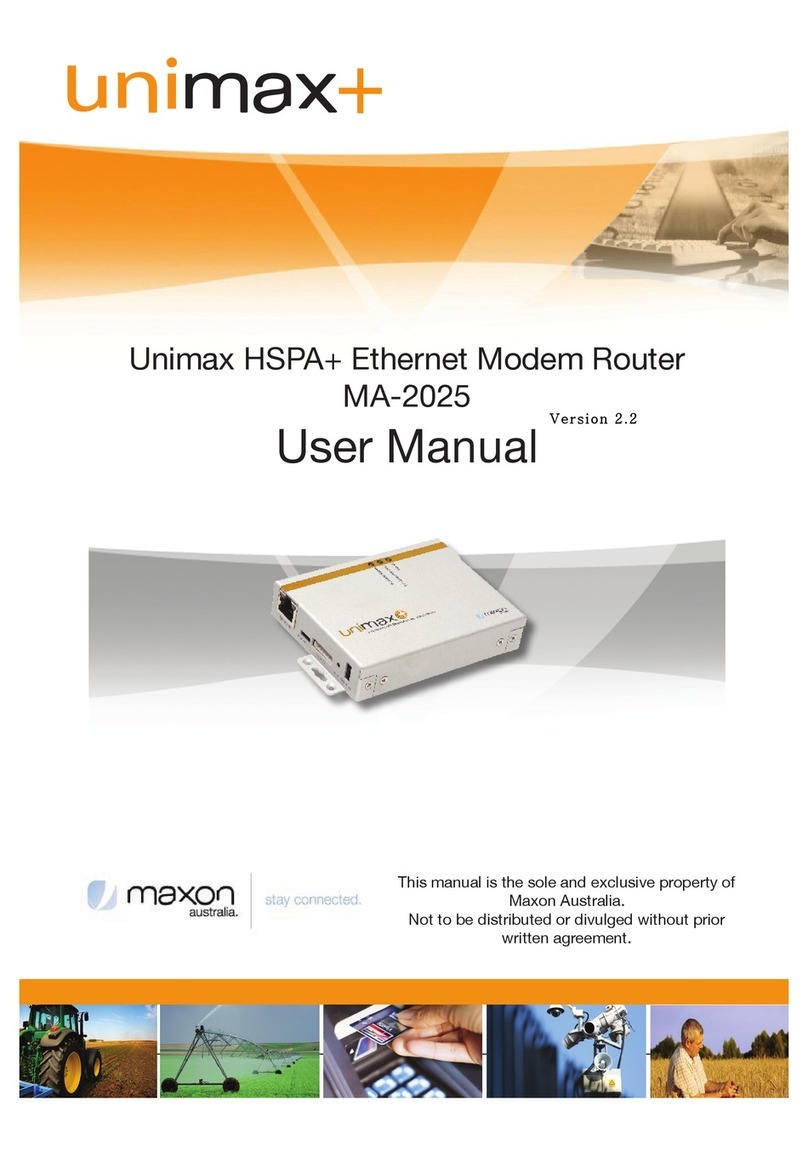5.!WEB INTERFACE............................................................................ 24!
5.1!Configuration Page Descriptions ....................................................25!
5.1.1!Status ..................................................................................25!
5.1.2!LAN .....................................................................................27!
5.1.2!WAN ...................................................................................28!
5.1.3!Maxconnect .........................................................................31!
5.1.4!Password..............................................................................31!
5.1.5!Log Out................................................................................32!
5.2!Configuration Page Descriptions – Advanced................................... 33!
5.2.2!Dynamic DNS ........................................................................33!
5.2.3!DoS Filters .............................................................................33!
5.2.4!DMZ ....................................................................................34!
5.2.5!Port Forwarding .....................................................................35!
5.2.6!IP Filtering ............................................................................. 36!
5.2.7!MAC Filtering......................................................................... 37!
5.2.8!VPN..................................................................................... 38!
5.2.9!Digital I/O Control ..................................................................38!
5.2.10!Ping Tool .............................................................................. 40!
5.2.11!SNMP...................................................................................41!
5.2.12!Static Route ..........................................................................42!
5.3!Configuration Page Descriptions – Administrator .............................42!
5.3.3!AT .......................................................................................42!
5.3.4!Backup (Save/Reload) ............................................................43!
5.3.5!Time Zone............................................................................. 45!
5.3.6!System .................................................................................46!
5.3.7!Upgrade Firmware .................................................................47!
5.3.8!Save & Reboot ...................................................................... 48!
6.!OPERATION................................................................................... 49!
6.1!Modem Router Mode ................................................................... 49!
6.1.1!Setting Host PC’s Network Environment .......................................49!
6.2!Bridge Mode...............................................................................51!
APPENDIX ................................................................................................ 56!
Digital Input/Output ................................................................................ 56!
H/W Specifications............................................................................. 56!
Electrical Specifications ......................................................................56!
Diagram ..........................................................................................56!
Upgrade Firmware .............................................. Error! Bookmark not defined.!
Factory Default Function .......................................................................... 57!




























